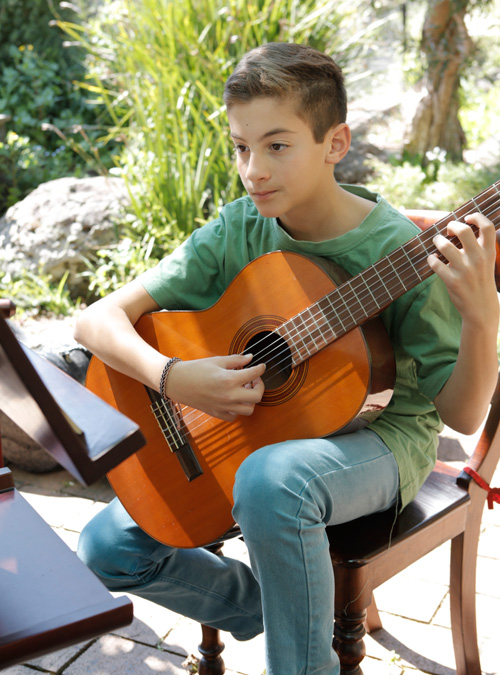
The Art of Practicing
Unless practice time is organised, there will be no improvement.
Share this:
[feather_share]
The problem with practicing is just that – guitar practice without much connection to playing. Many players imagine that they can improve by simply moving their fingers on the strings for as long as possible each day. Unless their guitar practice time is organised intelligently, they will not improve.
It may be true that practice of this kind for a while will improve finger dexterity and muscle strength, but it could equally well lead to strain if the player is not used to it and there will almost inevitably be some effort being wasted which could be directed into more useful activities. Of course a certain amount of time must be set aside each day for technical practice, otherwise the fingers will never have any fluency, but this technical practice should be based upon a musical approach.
Many people have only a limited amount of time each day for working at the guitar so a practice time table is recommended as a basis for musical study. This timetable is based on a 2 hour daily schedule. If you have less time you could reduce it:
- Twenty minutes scales, arpeggios, slurs, barres, block chords, apoyando (rest stroke), mixing (tirando) free and rest strokes. Some of these exercises should be designed to help overcome difficulties in the pieces you are learning.
- Twenty mins sight reading, especially (and remember this is the meaning of sight reading) new music! Find pieces which go into positions with which you are unfamiliar perhaps especially on the lower strings in higher positions. Also play in keys which you may not normally deal with – G min, C min, Bb etc.
- Twenty mins spent on practising some of the pieces recently learnt. You should find that by this time your fingers are warmed up and practising these pieces should be more enjoyable as you should be able to get round the notes that much easier.
- Now rest! This is important, since successful learning is coupled with periods of alternating intense activity and rest.
- When starting your second period of practice it will be useful to have a second warm-up. This need not be as long as the first one (say 10 mins instead 20) .You could also perhaps practice some of the things you did not do the first time.
- For the next 30-40 mins learn any new piece which you may have in mind (perhaps you discovered one when you were sight reading) or the next part of the piece which you are already working on.
- For the last few mins, try improvising. This may sound impossible to do and you may think that people have to be gifted for it. You can learn to improvise. Try first of all to play the tune of a folk tune or nursery song by ear. After a while this will become easier and you can fill in with chords, bass parts and so on. The results of including improve and sight reading in a proper practice schedule should be an increased ability to hear the music you are playing and to direct your efforts more efficiently.
